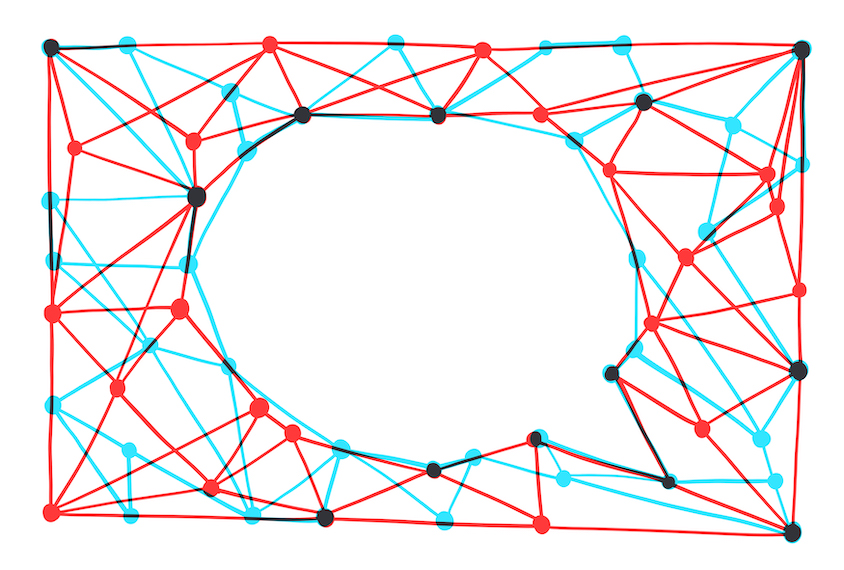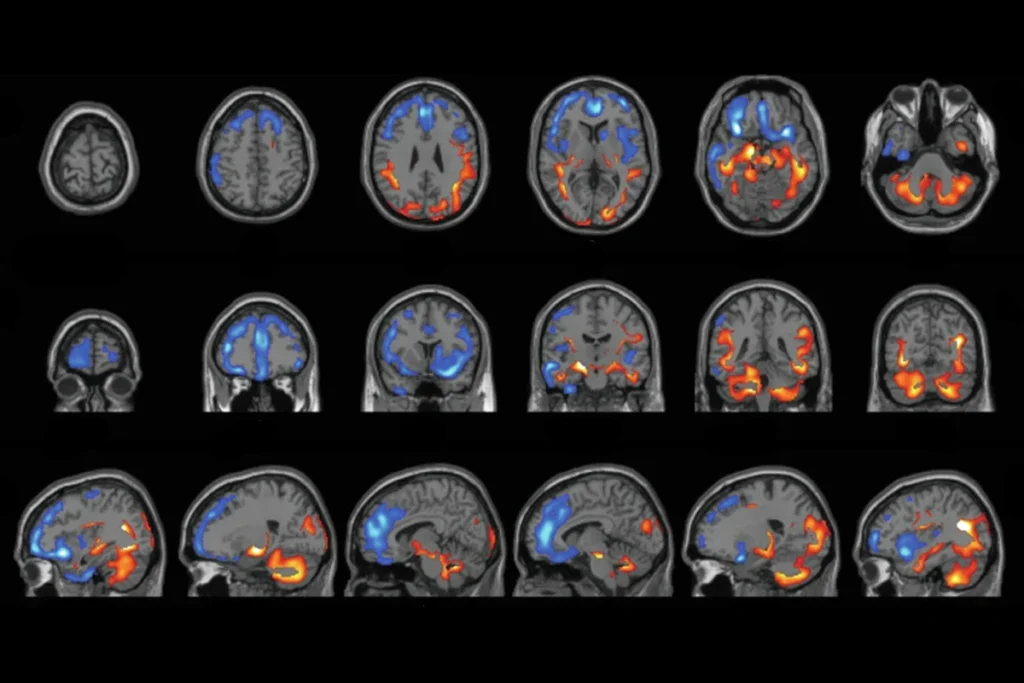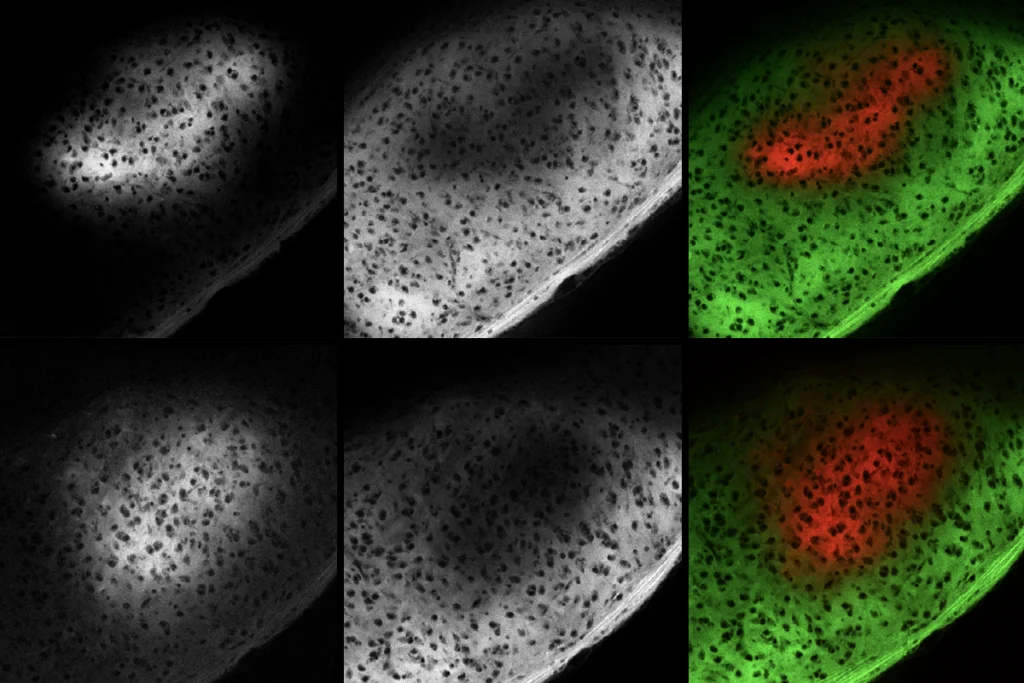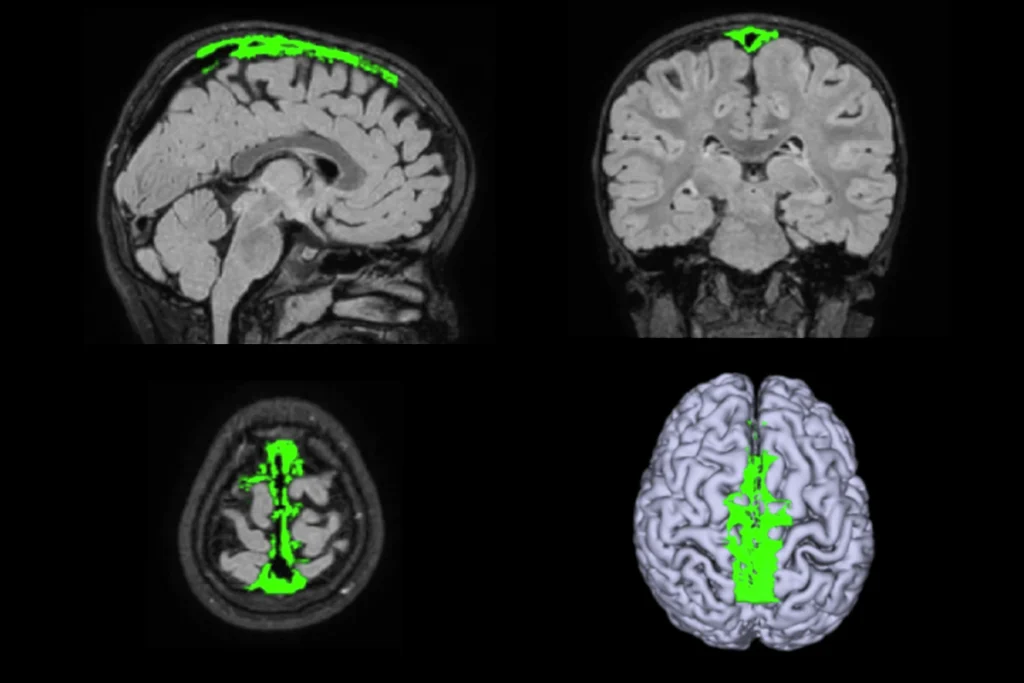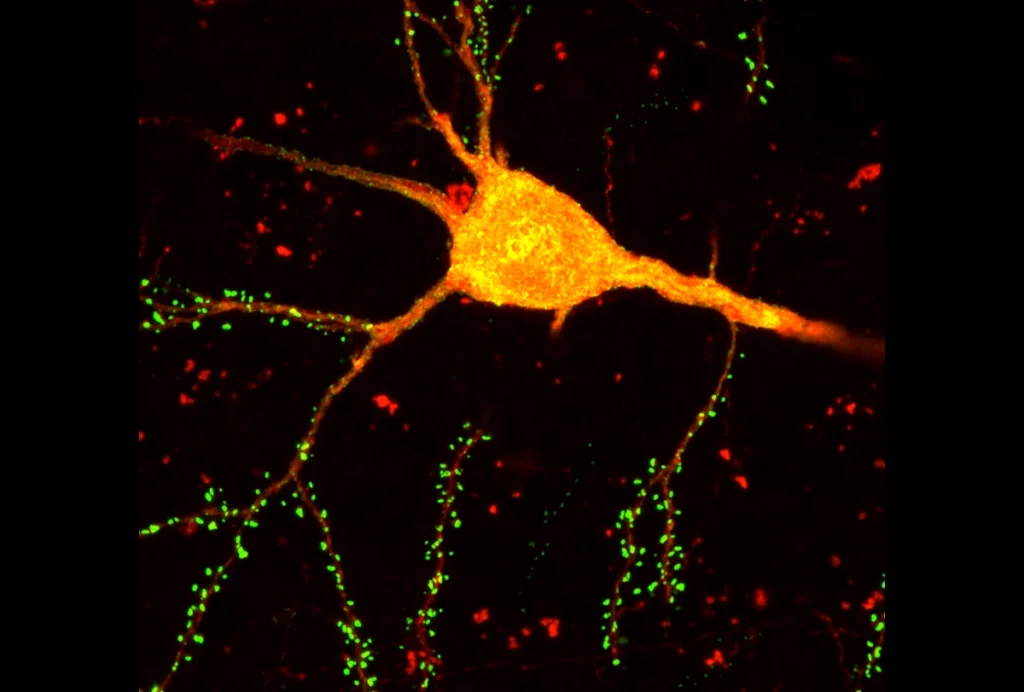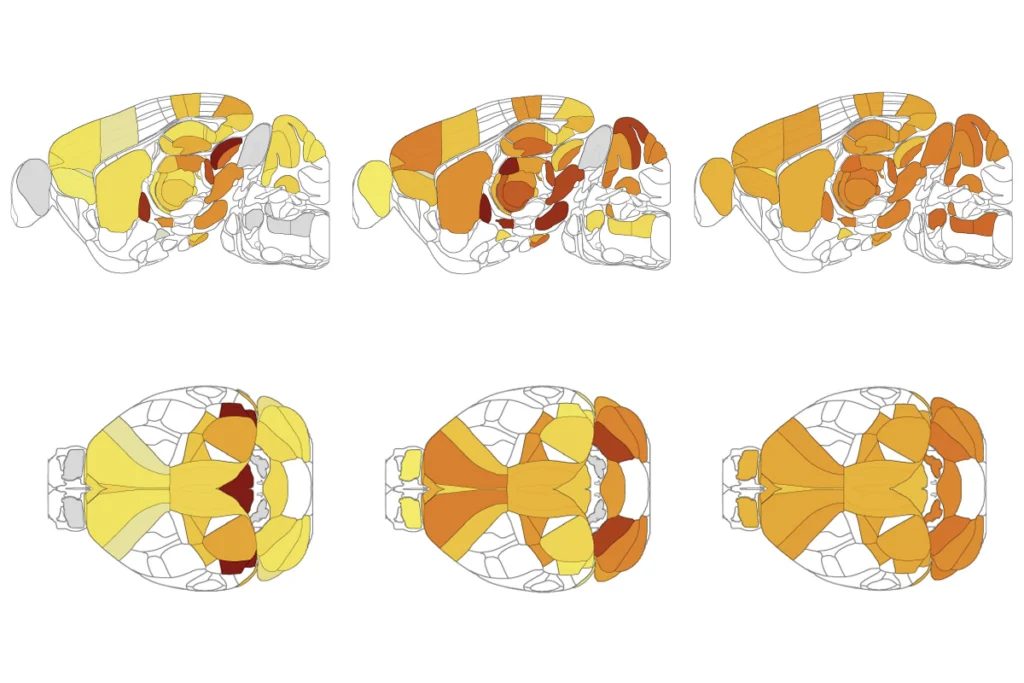Nicholas Steinmetz of the University of Washington described his team’s preprint, “Ultra-high density electrodes improve detection, yield, and cell type specificity of brain recordings,” posted on bioRxiv 25 August. Spectrum covered a previous version of the Neuropixels probe last year.
Introducing Neuropixels Ultra, a new probe with >10x site density: an implantable voltage camera capturing complete planar images of neurons’ electrical fields in vivo! spike sorting yield, detection of small fields and cell type identification.????https://t.co/buk0jURuwY pic.twitter.com/BiNo7yjANP
— Nick Steinmetz (@SteinmetzNeuro) August 28, 2023
Steinmetz also gave an update on his team’s preprint “Pinpoint: trajectory planning for multi-probe electrophysiology and injections in an interactive web-based 3D environment,” posted on bioRxiv 15 July.
Pinpoint, our trajectory planning software for electrophysiology in mice, has just had a major upgrade – and is now described in a preprint!
Use Pinpoint here: https://t.co/m3BghYODUq
Read about Pinpoint here: https://t.co/fMy8bUJSZn pic.twitter.com/8b7pALb2o5— Nick Steinmetz (@SteinmetzNeuro) August 29, 2023
Colin Hoy of the University of California, San Francisco and Guido Meijer of Radboud Universiteit responded to Steinmetz.
Very cool advance in #neurotechnology!
Given the pros/cons (eg coverage), I’d guess the direct impact will mainly be understanding local circuit mechanisms, but I hope it leads to better models of spike-field interactions that inform LFP/oscillatory measures common in humans. https://t.co/MBxsRxps2q
— Colin Hoy (@colinwhoy) August 28, 2023
Pinpoint is an incredible piece of software to plan your Neuropixel recordings! It aligns the Allen atlas to stereotactic space using an MRI transform to do the correction I’ve posted about before.
Also, the integration with SpikeGLX and Sensapex manipulators is just so awesome https://t.co/UBILLuVbSS
— Guido Meijer (@guido_meijer) August 29, 2023
Elisa Guma of the U.S. National Institute of Mental Health detailed her team’s preprint, “Comparative neuroimaging of sex differences in human and mouse brain anatomy,” posted on bioRxiv 24 August.
(1/10) Excited to share our new preprint examining cross-species sex differences in brain anatomy in humans and mice:
“Comparative neuroimaging of sex differences in human and mouse brain anatomy”https://t.co/11BgSV8ORR.
Description in thread.— Elisa Guma (@elisa_guma) August 25, 2023
Armin Raznahan, also of the U.S. National Institute of Mental Health, replied to Guma.
Do humans and mice show similar sex differences in brain anatomy ?
All-round superstar @elisa_guma tackles this question in new work just out from a collaboration she led between our group @NIMHgov @IRPatNIH and Jason Lerch @UniofOxford @OxfordWIN
Check out her fab ???? ! https://t.co/GZ2R6ogf0Q
— Armin Raznahan (@bogglerapture) August 28, 2023
Hao Wu of the University of Pennsylvania explained his team’s study, “Joint single-cell profiling resolves 5mC and 5hmC and reveals their distinct gene regulatory effects,” published in Nature Biotechnology 28 August.
Thrilled to see our single-cell DNA (hydroxy)methylome sequencing method out (https://t.co/qT62E0qj9G) ! Interdisciplinary efforts from talented first authors: @ebfabyanic (Emily’s thesis project), Peng – @PengHu_xqq, and Qi – @QiQiu8788 ! https://t.co/9j7khphm1O
— Hao Wu | 吴昊 (@hao_wu_7) August 28, 2023
Elia Marcos-Grañeda of the National Center for Biotechnology in Spain explained her study, “CUX1-related neurodevelopmental disorder: deep insights into phenotype-genotype spectrum and underlying pathology,” published in the European Journal of Human Genetics 30 August.
Rogier Kievit of Cambridge University announced his preprint, “No evidence for a link between childhood (6-10y) cellular aging and brain morphology (12y) in a preregistered longitudinal study,” posted on bioRxiv 22 August.
Because null findings are findings too – we (led by Evie Brinkman and @WeerthDe) found no evidence for (and some bayesian evidence against) associations between epigenetic aging / telomere shortening (age 6 & 10) and grey matter volume (age 12) N=94 https://t.co/HK8VHu61Bz
— rogier kievit (@rogierK) August 29, 2023
Arielle Keller of the University of Pennsylvania explained her team’s preprint, “A general exposome factor explains individual differences in functional brain network topography and cognition in youth,” posted on bioRxiv 27 August.
New preprint! Our brains don’t develop in a vacuum, but enmeshed in a complex web of experiences+environments. How can we characterize the interconnected and co-occurring features of a child’s environment to better understand cognitive neurodevelopment? https://t.co/55JrzCqIzK /1
— Arielle Keller (@ArielleKeller) August 28, 2023
Theodore Satterthwaite of the University of Pennsylvania replied to Keller.
Phenomenal work from the matchless Dr. @ArielleKeller (now on job market!). She defines links between child-specific functional brain networks, cognition, and sophisticated measures of the environment — the exposome! Super-fun collab w @Ran_BarziLab @DrDamienFair @UMN_MIDB. https://t.co/6bjaPPqcg3
— Ted Satterthwaite (@sattertt) August 28, 2023
Koraima Sotomayor-Enriquez of the University of Edinburgh shared her team’s preprint, “Open dataset of theory of mind reasoning in early to middle childhood,” posted on PsyArXiv 28 August.
Thrilled to share our new pre-print featuring an open dataset of children responses to a #TheoryofMind task!???? Ever thought about how kids figure out what you’re thinking? Check out our open dataset here https://t.co/Ojb8zgtn1L and our preprint https://t.co/mh3UoxS1uh
— Koraima (@korysot) August 28, 2023
Joe Henrich of Harvard University responded to Sotomayor-Enriquez.
Cool, that could be interesting to combine with our ToM storybook data (and 2 other ToM tasks and IQ) as well as children’s imitation and decisions in a zero-sum interaction with stickers on the line. @abaimel @aiyanakoka n~300 Vancouver kids. https://t.co/PWnFr7lHxw https://t.co/ALMFckYuqA
— Joe Henrich (@JoHenrich) August 28, 2023
That’s it for this week’s Community Newsletter! If you have any suggestions for interesting social posts you saw in the autism research sphere, feel free to send an email to [email protected].
